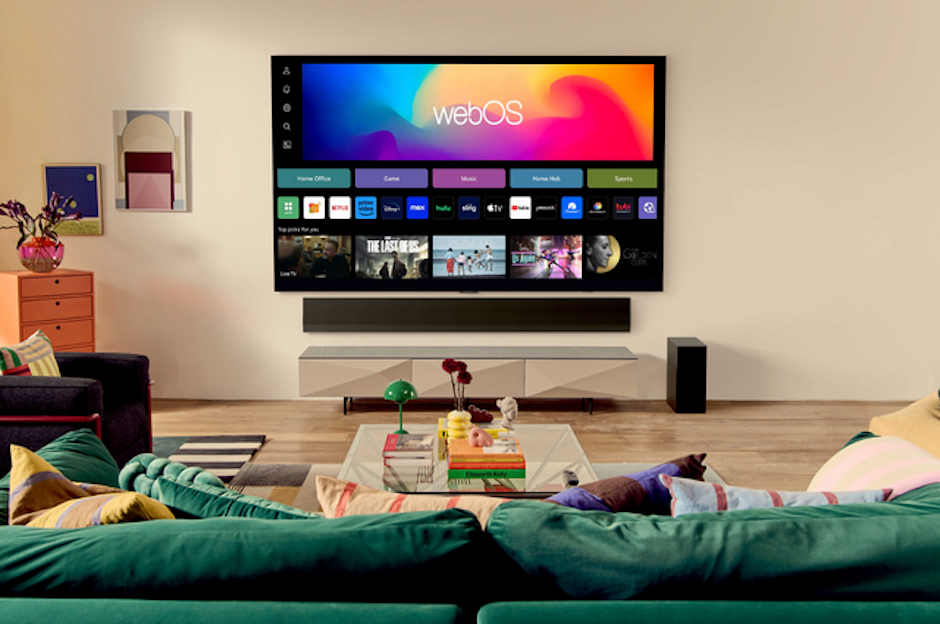Connected TV: Content is still King, but discoverability is Queen, says recent research
As the CTV market continues to grow, more and more content will vie for the attention of audiences, and discoverability’s importance will continue to grow as well, says Ryan Afshar (head of publisher development, LG Ad Solutions).

Watching the latest big-budget TV shows and events is more than a pastime for most of us; it’s an inevitability. It’s been the same since the invention of TV, with people keen to discuss and dissect the finer points in their home, schools, workplaces and on social media. It is a format that has brought us together, with some of the most memorable images of the past 100 years imprinting on us from the largest screen in the house – from the moon landings to the finale of The Sopranos.
However, in recent years a fundamental shift has occurred in the way that UK audiences get their content fix. Increasingly this means moving away from linear TV. Our recent report – The Big Shift: United Kingdom Wave II – digs into this, helping to determine consumer perceptions and behaviors related to connected TV (CTV).
According to the report, 25% of UK viewers stated that last year they watched less linear TV than the previous year – a drastic uptick when compared to even the previous year’s figure of 12%.
This shift towards CTV has changed not only how audiences consume their favorite content but how they discover them.
CTV's conundrum of content riches
CTV’s rapid growth in the past few years has led to a content landscape that is richer and larger than ever before. The sheer range and wealth of content that is available means even the most niche tastes can be catered for.
The range of ways to watch has also accelerated quickly. The anytime, anywhere nature of streaming has long appealed to viewers, but as the market has matured and further options have emerged – from subscription video on demand (SVOD) to ad-driven streaming to emergent distribution channels such as free ad-supported streaming channels (FASTs) – it has become even easier to access content.
This explosion of options has created different issues. Over half (53%) of UK TV viewers actually feel overwhelmed by the amount of content available to them. A further 33% find themselves confused about where to find content, while 16% find the number of steps from TV to content a barrier to selecting what they want to watch. In total, it takes UK viewers an average of six minutes to start their viewing experience, with US audiences taking only slightly less time with 5.7 minutes.
It is not just the wealth of content that is creating a fractious discoverability process, but the sheer number of providers available to audiences. The majority of UK audiences (86%) pay for more than one streaming service, with 61% likely to subscription cycle. With new services appearing all the time, it is no longer enough for a publisher to just place their streaming app on a CTV app store and hope it gains, downloads, subscribers and ultimately viewers – they have to stand out from the crowd.
How the homescreen unlocks discoverability
As the content options continue to grow, one place is becoming increasingly important to audiences – the homescreen. For US audiences, it is the second most important place for content discovery, after family and friends. For UK viewers however, it is the most important – with over half of viewers (53%) using it as their primary source for new content.
Content owners can take advantage of the dominance of the home screen via native advertising. These ad slots are highly effective, capturing audiences when they are in the market to be entertained. While a billboard promoting a new show or film may raise consumer awareness, native ads on CTV homescreens help to cut down the discoverability journey.
With a number of creative options available – from large-scale banner take-overs to auto-playing video – native ads drastically shorten the distance between turning on the TV to viewing content. Partnerships with original equipment manufacturers (OEMs) can be particularly effective for unlocking these ads. As well as offering insights about how to maximize your native ads.
To ensure native ad slots are successful, marketers must support them with detailed audience data. Automatic content recognition (ACR) technology identifies viewers' habits on Smart TVs, enabling advertisers to better track their viewing behavior across various channels, apps, and even input devices. Devices equipped with ACR can automatically gather information about content consumption directly from the screen, without requiring any input or search efforts from users.
For example, a new sports streaming service could use ACR to identify viewers that already watch sports on their smart TV, whether that is through an app or console. Native ads can then be run on their homescreens to alert them of this new streaming option.
Similarly, this approach can be used to address viewer churn. Nearly two-thirds of UK viewers (61%) admit to subscription cycling. ACR not only allows content owners to pinpoint those who have stopped their subscription, but analyze what content they enjoyed when they were signed up. Targeted messaging around similar content could then be shown to them via native ad slots.
As the CTV market continues to grow, more and more content will vie for the attention of audiences, and discoverability’s importance will continue to grow as well. If publishers are to ensure that their content gets in front of their target viewers, harnessing the homescreen will be key. Through native ads, co-promotions with OEMs, and the granular insight that ACR provides, the time between switching on the TV and settling down with a new favorite show can be even shorter.
By Ryan Afshar, head of publisher development, LG Ad Solutions

